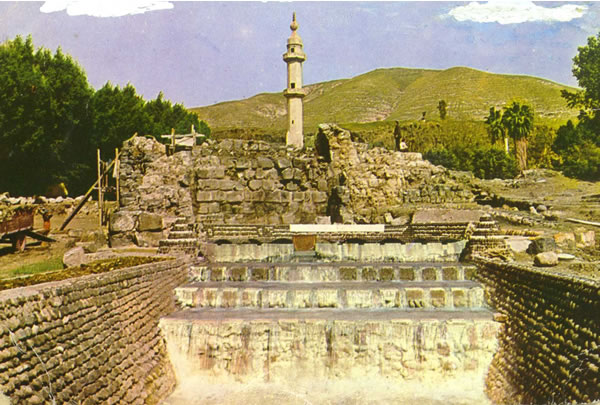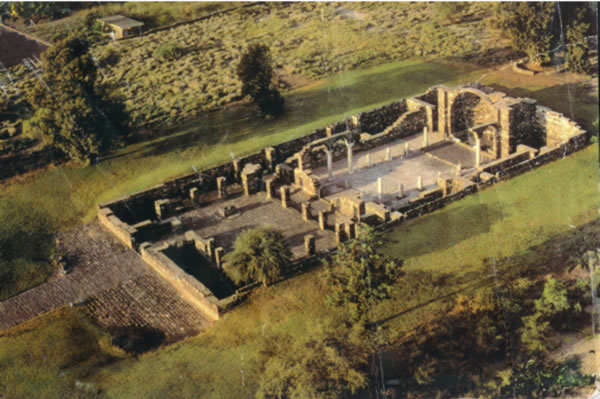-
Published: 17 November 2015
-
Hits: 4458
Antiquities stolen and forged by Israelis:
Tens of Israeli archeological groups explored different famous sites in occupied Golan. They looked for evidences that can justify their occupation, or to put it clearly ,they looked for Jewish items left by a small Jewish minority that lived in the Golan for a short period of time. This minority had dissolved and integrated with the local people and had no link with the Israeli occupiers. Israeli archeologists looted all of the items they discovered in the Golan and transferred them to Israeli museums. Very few of these items were kept in the local museum of Kasrin, established by Israeli authorities. Israeli excavation missions always tend to conceal this fact .Their reports are free from any hint to the origin of the antiquities discovered in the Golan.
Sites registered by the Ministry of Culture in the Syrian Arab Republic: In 1983 the Ministry of culture in the S.A.R. started a general survey of the historical sites all over the Golan and registered them as national heritage sites. Decree 39/A of 30.3.1983 classified Banias (in the Governorate of Quneitra) as an ancient city within the boundaries stated in the archives of the General Directorate of Antiquities and Museums in S.A.R. Decree 146/A of 3.9.1983 listed 209 locations as historical sites that belong to different ancient ages. Important Historical cities and sites:
1-Hamma: Hamma is one of the most archeological and tourist sites in the world. It is famous because of the springs of mineral water , the Roman amphitheatre and the remains of the Roman Baths. It was mentioned by Aristotle. Hamma has 3 hot sulfurous water springs: Al Shifa 48 c, al Balsam 40 c, and Ein Younes 32c.,and two cold ones.

2-Castle of Sossia: This castle was built in the first century B.C. by the Nabateans west of Fiq. God "Thul Shira " was worshipped in the castle. It was known in Greek as Hippus, in Arabic Aramaic as Sossita, both mean 'the horse' because the castle and the hill under it ,together, look like the shape of a horse.During the Roman and Byzantine period Sossia was one of ten important cities. It was mentioned in "Fotouh al Buldan" = (Conquest of kingdoms) by the Arab historian al Balatheri.
3-Al Kursi: Al Kursi in Arabic means the seat. This city is important because Jesus Christ lived in it for a short period. Historian Yaqout al Hamwi says :"it is a village in Tiberia where Jesus Christ met the apostles. There is a place called al Kursi (which means the seat), where Jesus sat and instructed the apostles to spread the word of God in the neighboring areas .Al Kursi has the largest old convent in the Levant. There are still some remains of the old houses of the Christian priests ,the bakeries and the olive presses. The convent was built in the fifth century A.D. Its ground was covered by mosaic plateaus, typical of the Roman churches. Remains of a small marina were also found there.

4 - Deir Qarrouh: Deir Qarrouh is an important archeological site in occupied Golan. It is located in Wadi Zeiteh .The site is surrounded ,in the four directions ,by a strong wall. It has the shape of a camel's hump with several circular towers supporting the walls .The site has the remains of a convent or a cathedral. Hence came the name in Arabic: Deir Qarrouh.where the word deir means :convent.
5 - Beit Saida:
Beit Saida is a historical village north east of lake Tiberia. It was one of the villages frequented by Jesus Christ. Three of the apostles were from Beit Saida. It has the remains of old fortifications, houses and a palace. Many items that belong to the first century A.D. were Found in Beit Saida.
